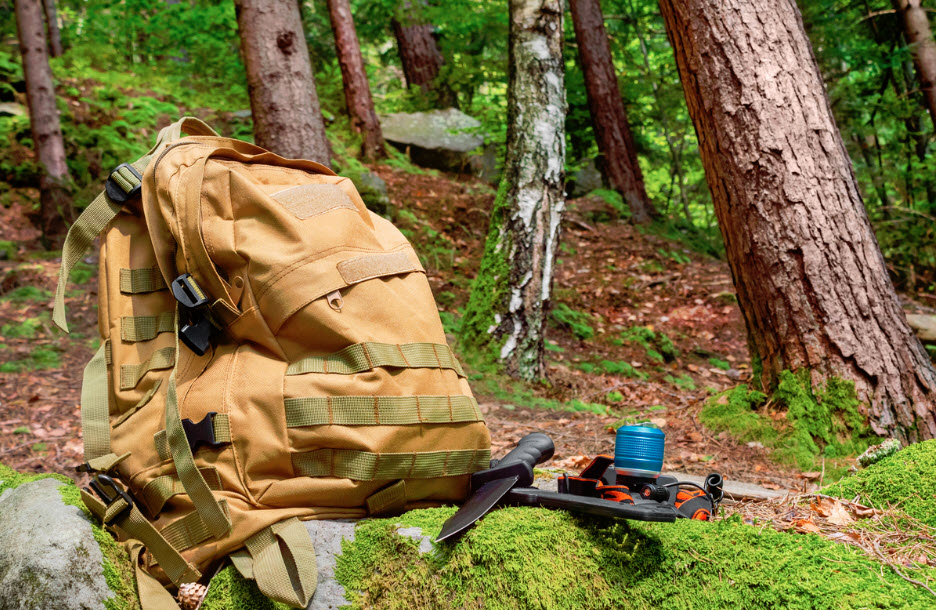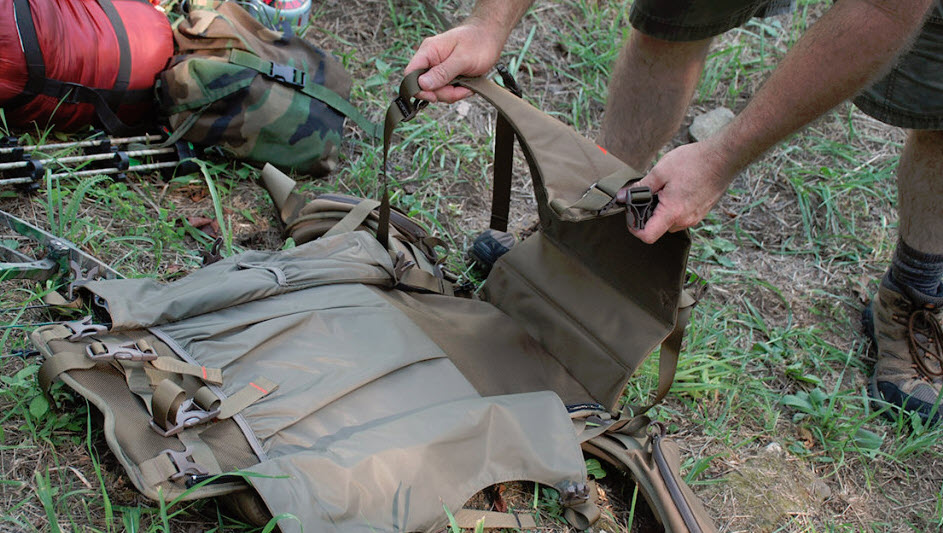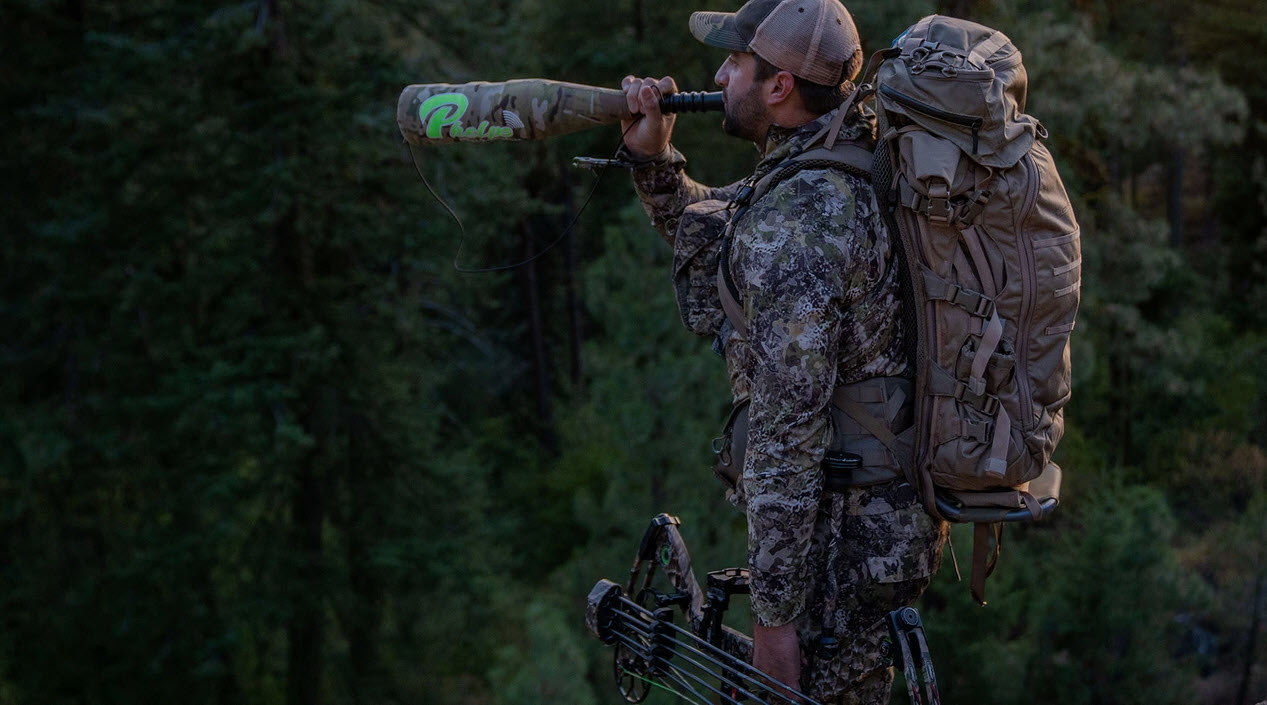
If you’re planning to try backpack hunting, you need to pay attention to many things when picking the backpack. One of the aspects that beginners forget is to check the size and fit of the pack. Most packs will fit somewhat ok and in-store when they’re empty. It’s only when you’re heavily backpacking in the mountains that you actually realize that both the size and fit are off, causing you discomfort and affecting your efficiency.
Page Contents
Why pay attention to size and fit for your hunting backpack?
Comfort is essential when you’re backpack hunting, and you cannot afford the luxury of not having it; you need to focus on your shoot and not on back pain.
When you’re carrying an ill-fitting pack, there will be excessive pressure on your shoulders and neck. The balance will be affected because the weight isn’t properly distributed, and you won’t be capable of having the correct posture either. You will be forced to compensate in the way you walk too.
While you’re walking on rough terrain and elevating, you want to be as comfortable as possible. When you carry 60 pounds on your back, and the pack rubs on your hip bones instead of sitting safely against them, it’s tricky (to say the least) to focus on your hunt.
Your hunting backpack should be the correct size and fit you properly- read our recommendations before choosing your backpack.
Torso length – the fundamental element when it comes to sizing
No hunting backpack will work for you if it doesn’t provide the best fit for your body. Finding the correct size for the pack isn’t easy, and it’s your torso length (and not your height) that counts the most.
How do you measure your torso length?
It won’t be easy to measure the torso length on your own, so call a friend for help; use a flexible tape measure:
- Begin by tilting your head forward so that you feel the bump where the neck meets the shoulders’ slope. That little bump is known as the C7 vertebra and works as the top of torso length.
- Slide your hands down your rib cage (on both sides), down to the top of the hip bones. Place the index fingers forward and thumbs backward, drawing an imaginary line between the thumbs. This spot will give the bottom of the torso length.
- Stand up straight and ask your friend to measure the length between the c7 and the line between the thumb. You will obtain the torso length.
How do you use the torso length when selecting the pack size?
Reputed manufacturers will display the torso range for every pack size. Torso ranges for backpack sizes are different from one manufacturer to another. Also, between models, you need to verify the size chart for the backpack you’re planning to buy.
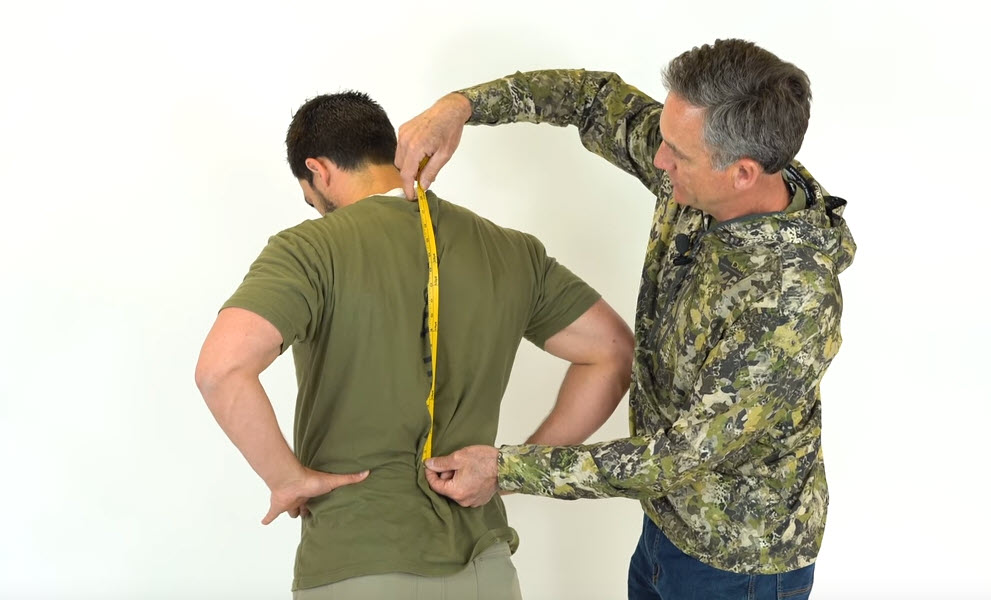
If you fall between sizes, it’s best to go to a store and try backpacks of various sizes. Most of the time, the home measurement isn’t accurate, so that you will need professional help with the sizing.
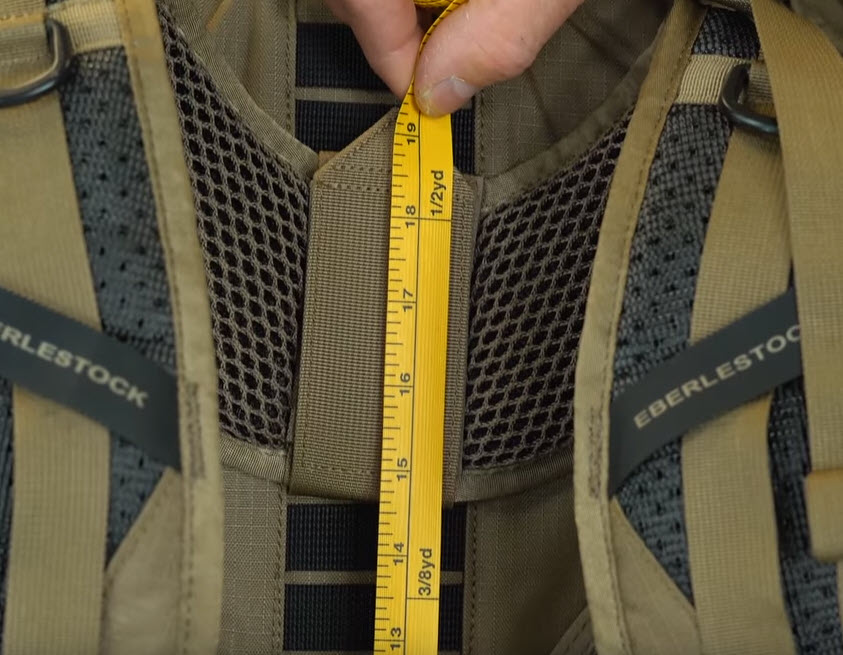
Measuring the hip size is also important
It’s rare for a hip/waist size to be off when the torso length is correct, but you should still verify your hip measures. When you’re backpack hunting, you will carry most of the pack’s weight on the hips, and a superior fit for the hip belt is essential for comfort.
For measuring the hip size, you have to wrap the tape measure around the top of the hip, including the iliac crest you identified when measuring the torso. The line is slightly higher than the belt line, so don’t be surprised if the hip belt size isn’t the same as the pant waist size.
You should always measure it twice and be sure of the hip size when selecting your backpack. Interchangeable hip belts are available for prestigious manufacturers, but why not buy the correct size from the beginning?
Fitting the hunting backpack – what’s to check?
The adjustable suspension system is standard for the most reliable hunting backpacks. They make packs versatile, fitting a wider range of torso lengths and providing an accurate fit for every user. Different manufacturers will utilize other suspension systems, and most systems are user-friendly.
If you buy a backpack with an adjustable suspension system, you should begin by adjusting the torso length. When other fit adjustments don’t seem to work for you, you will need to check them all once again, and even reset the torso length. No adjustment straps will solve the problem of a poorly set adjustable system.
What gives the best fit for the hunting backpack?
You will have to check many things when selecting the pack for hunting, and fitting is fundamental. Here are some aspects to check:
Hip belt
The hip belt should rest properly on the iliac crest. When the pack fits you well, the hip belt should sit on the center of the top of the iliac crest. It shouldn’t be higher or lower.
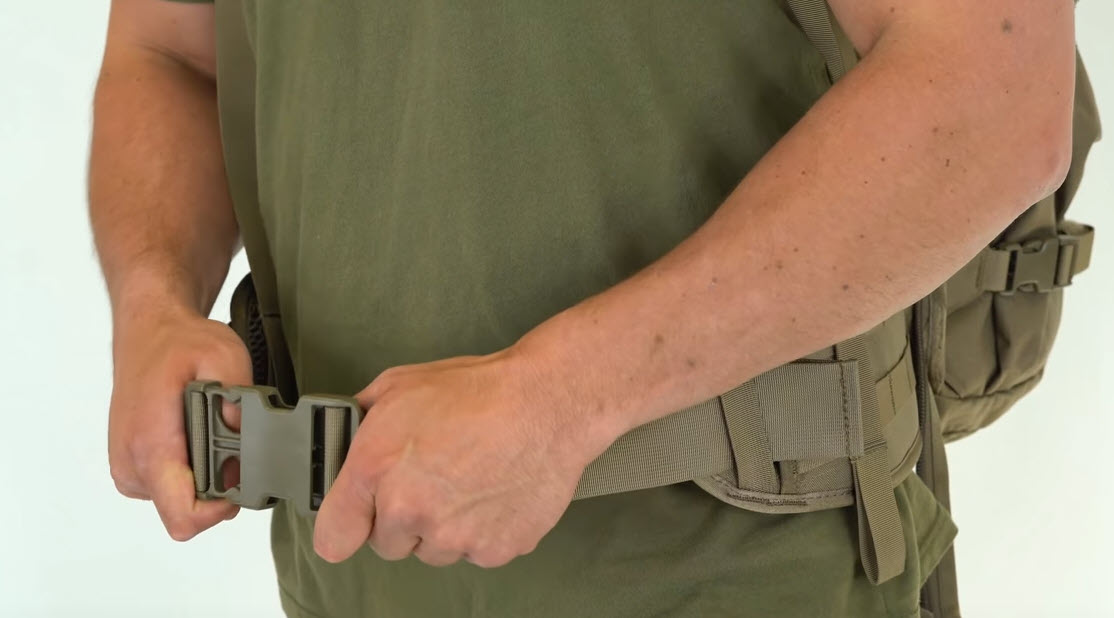
When the hip belt slides under the iliac crest while you’re trying the backpack, the pack is just too big for you. The backpack is too small if the belt sits on the lower back.
Shoulder straps
Select a backpack with comfortable shoulder straps that provide a snug fit. They shouldn’t run against the neck, though. Make sure that there’s no space between the shoulders and the straps.
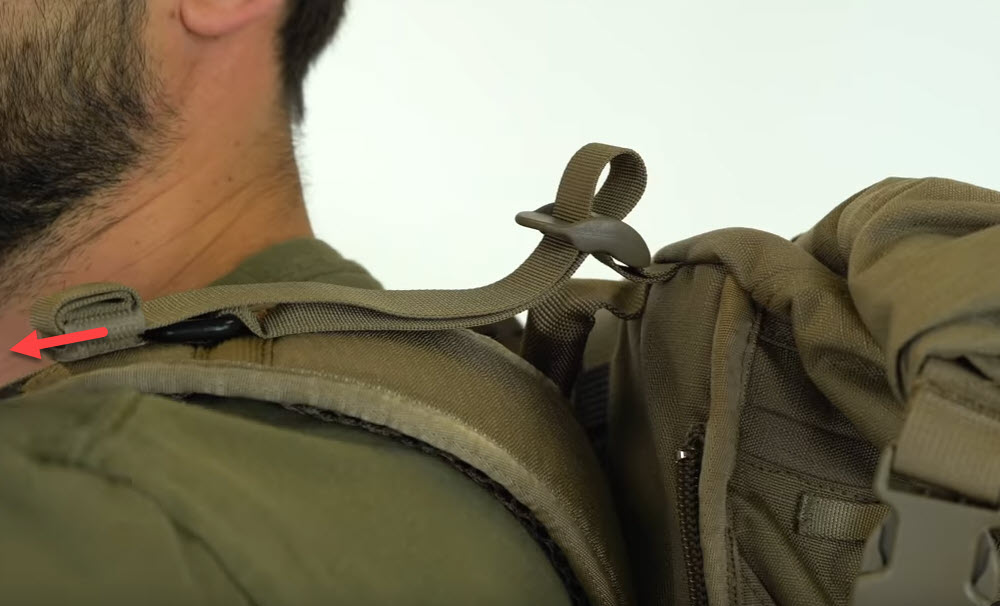
When the shoulder straps rub against the neck after you’ve adjusted it for the best fit, the straps’ harness could be too narrow for your body.
The harness is too wide if the straps don’t hug the shoulders.
Chest strap
Look for a hunting backpack that features a comfortable chest strap, able to secure the shoulder straps in place. The chest strap shouldn’t constrict your breathing nor rub against the neck.
You have to tighten the strap to keep the shoulder straps in place without causing them to dig or affect your arm movement.
When you tighten the chest strap, but the shoulder straps still don’t stay in against the shoulders, a narrower harness is recommended. If you draw the chest strap and feel uncomfortable, you should try another backpack or look for a wider harness.
Frame
We have a full article on choosing and adjusting the frame.
Making adjustments to the backpack
Your new backpack should come with multiple straps to adjust the load for superior comfort. But the adjustments you can do at home differ from those you can do on the trail, so keep reading for the details:
Fitting adjustments to make at home
You will need to make all the necessary adjustments at home (after loading a bit of the backpack) to make sure that you will feel comfortable when backpack hunting. With your legs having the strongest muscles, you want the straps to make the most of the load rest on your hips.
There are four main adjustment straps to set:
- Hip belt
- Shoulder straps
- Load-lifter straps
- Sternum strap
You can begin with 15 pounds of weight in the backpack for simulating your load. It’s better to have someone help you or at least to sit in front of a mirror for the best results. Begin with loosening every adjustment strap.
Adjusting the backpack for the best fit is a dynamic process, and experienced hunters will always make minor adjustments to remove the pressure points and fiddle with the straps’ tension.
Adjustments for the hip belt
Taking specific steps will help you obtain the best results, so don’t skip any:
- Start by putting the backpack on. Move the hip belt until you feel the padding touching the top of the hip bones (the iliac crest). Tight/loosen the shoulder straps to raise/lower the belt when it sits too low/high.
- Continue with fastening the buckle of the hip belt, but don’t overtighten it. It should provide a safe and snug fit without pinching the hips.
- Verify the padded areas of the hip belt as they should sit on top of your hips; if they don’t, you have to re-adjust the shoulder straps and the hip belt. It would help if you tried various tensions until you get it right.
- The belt padding should go a bit over the front spot of the hip bones. You should have at least one inch of clearance on both sides of the center buckle and get a smaller belt if it’s less than one inch.
- The backpack’s weight should rest entirely on the hips when the hip belt is tightened, and the shoulder straps are still loose. When you backpack hunting, 80% of the weight should be on the hips, and the remaining 20% should be on the shoulders.
Adjusting the shoulder straps
- Tighten the straps by pulling them down and back
- The shoulder straps are supposed to wrap close around the shoulders without carrying much weight.
- Verify that the strap’s anchor points are 1 or 2 inches below the top of your shoulders, barely touching the top of shoulder blades. When they don’t, the hip belt could be at the incorrect level, or the torso length is wrong.
- Tighten and loosen the straps to modify the shoulder strap tension. You have to learn to finely adjust the straps to decrease the pain or remove the pressure points while hunting.
- When the pack fits you correctly, the shoulder straps hug the shoulders from the back to the front, leaving no space between the shoulders and the straps.
- The torso may be too long when the straps don’t become comfortable and snugging; the torso is also too long if there are gaps between the shoulders and the strap.
Adjusting the load lifters
Load lifter straps attach to the shoulder harness’s top to an anchor point close to the back panel’s top. When there’s tension, they will angle back toward the body’s pack at a 45-degree angle (give or take).
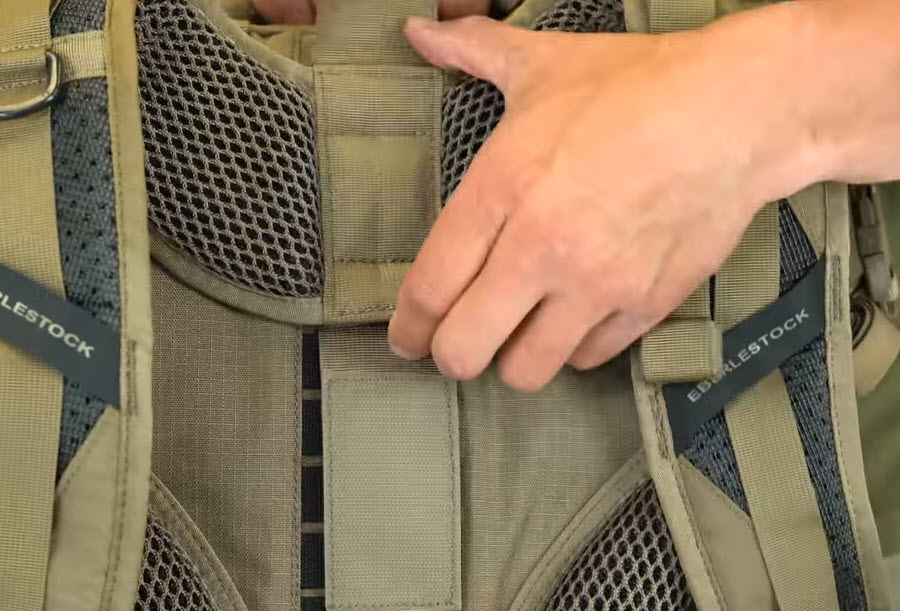
- Never overtighten the load lifters as it will pinch the shoulder joints, making them uncomfortable. A snug tension is effective most of the time. Should you see a space at the shoulder harness’s top, you need to try again after loosening the load lifters.
- Tighten the load lifters a little if the pack is instead pulling backward; loosen the lifters though if your head’s back hits the top of the bag.
- Don’t be surprised if your small backpack doesn’t come with load lifters; it’s typically the larger models that feature load lifters for the obvious reasons.
Adjusting the sternum strap
The sternum strap should secure the shoulder straps in place. You need to fasten and tighten it without altering the fit of the backpack.
- Begin with sliding the sternum strap until it sits at a comfortable height across the chest; it’s an inch below the collarbones.
- Continue with buckling and tightening the strap to adjust the shoulder straps at width for unrestricted arm movement.
- Don’t overtighten the sternum strap because you will alter your harness’s fit, restrict breathing, and constrict your chest muscles.
Adjustments to make on the trail
You only need to backpack hunt for 10 miles to realize that the perfect fit you made at home doesn’t work anymore. Observe the trail and run the required adjustments for superior fit while hunting.
- Don’t hesitate to spend time at home playing with all the straps on the backpack, learning how they all work together.
- Make sure to remember the best fit of your backpack.
- You can always work the adjustment straps to reduce pain, aches, and pressure points. It will take a lot of trial and error until you learn how to work your hunting backpack.
- You can tighten the shoulder straps while loosening the hip belt and reverse the steps later in the day; it’s a handy method for handling load fatigue.
- Always pay attention to your body position. When you lean forward, you will feel the load more in balance.
One last piece of advice
Remember to take a break any now and then. Even if your hunting backpack fits perfectly, you still need to rest and breathe, stretching out your muscles.
This video from Eberlestock will help you with most other backpacks:

